6
Chapter 6
Setting Up Your Database
Before you can continue working on your dashboard, you'll need some data. In this chapter, you'll be setting up a PostgreSQL database using @vercel/postgres. If you're already familiar with PostgreSQL and would prefer to use your own provider, you can skip this chapter and set it up on your own. Otherwise, let's continue!
In this chapter...
Here are the topics we’ll cover
Push your project to GitHub.
Set up a Vercel account and link your GitHub repo for instant previews and deployments.
Create and link your project to a Postgres database.
Seed the database with initial data.
Create a GitHub repository
To start, let's push your repository to Github if you haven't done so already. This will make it easier to set up your database and deploy.
If you need help setting up your repository, take a look at this guide on GitHub.
Good to know:
- You can also use other Git provider like GitLab or Bitbucket.
- If you're new to GitHub, we recommend the GitHub Desktop App for a simplified development workflow.
Create a Vercel account
Visit vercel.com/signup to create an account. Choose the free "hobby" plan. Select Continue with GitHub to connect your GitHub and Vercel accounts.
Connect and deploy your project
Next, you'll be taken to this screen where you can select and import the GitHub repository you've just created:
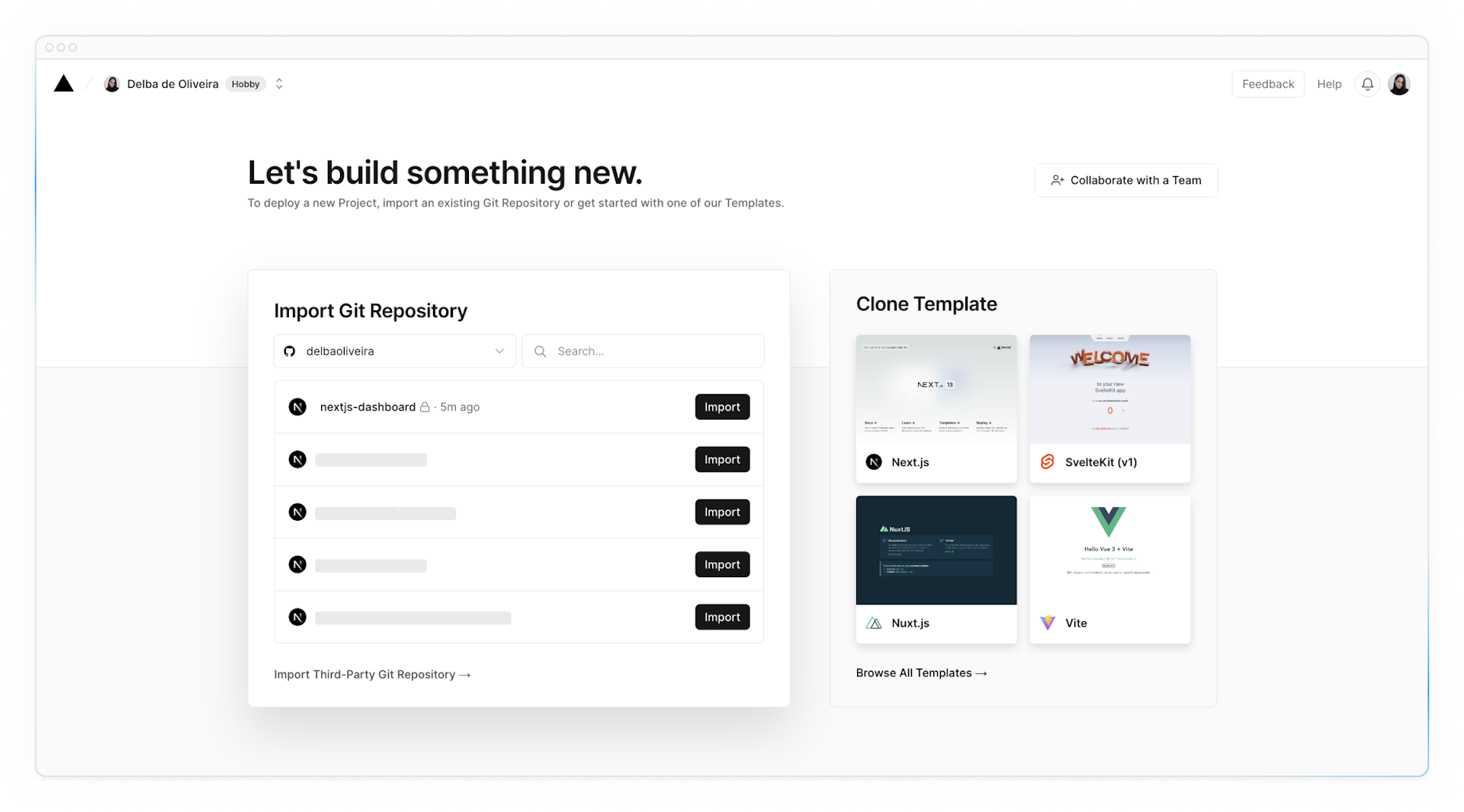

Name your project and click Deploy.
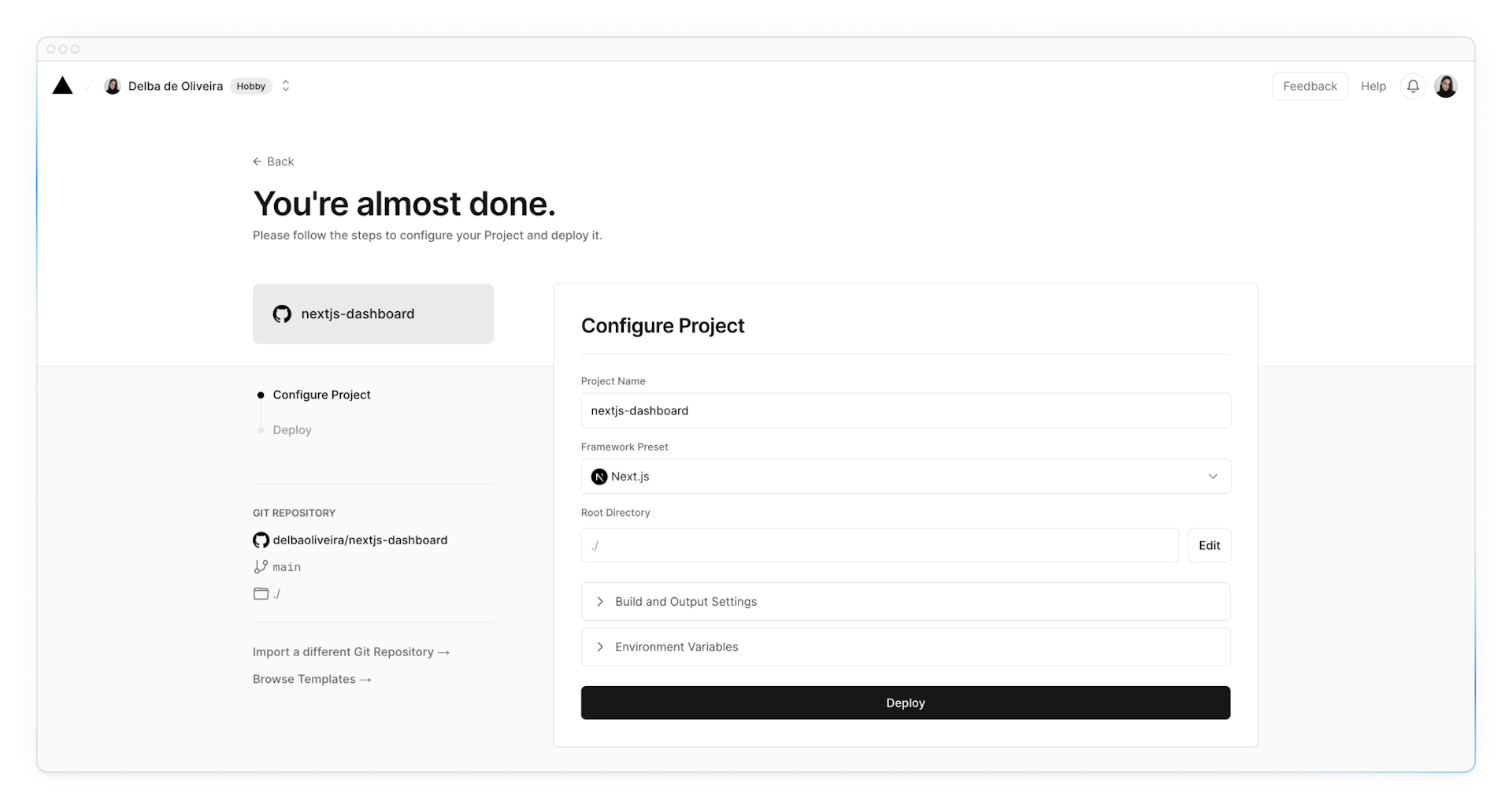

Hooray! 🎉 Your project is now deployed.
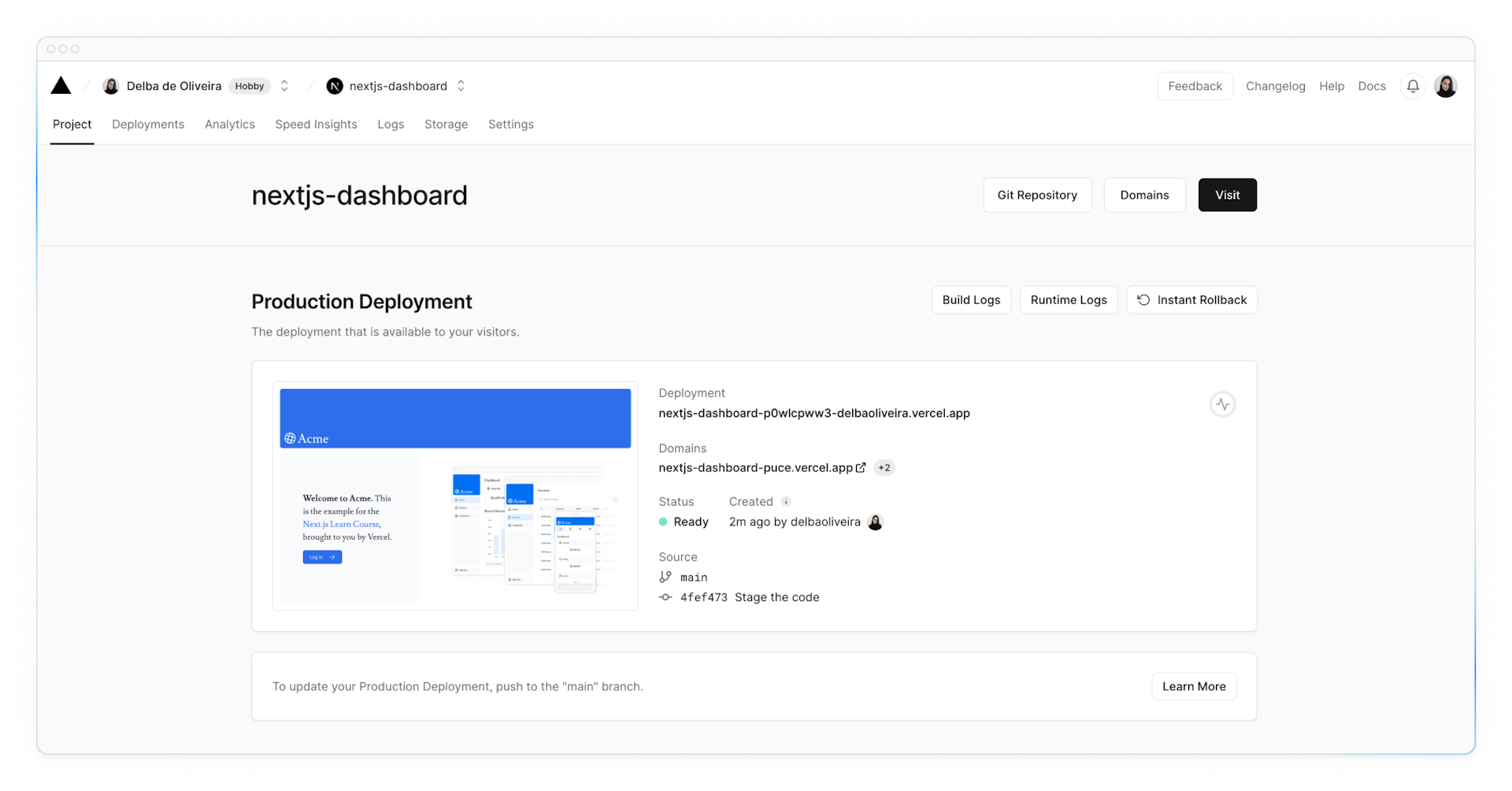
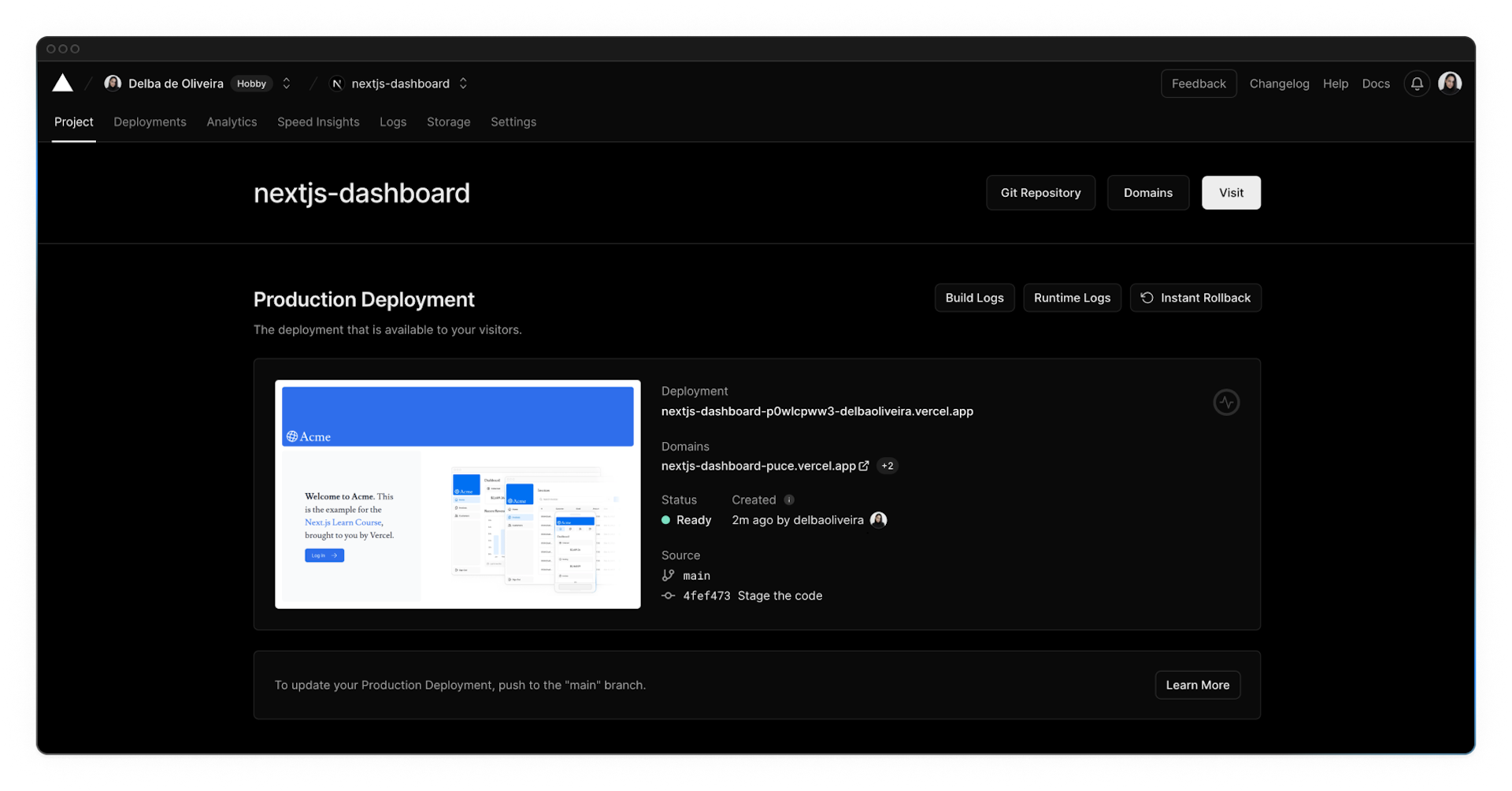
By connecting your GitHub repository, whenever you push changes to your main branch, Vercel will automatically redeploy your application with no configuration needed. When opening pull requests, you'll also have instant previews which allow you to catch deployment errors early and share a preview of your project with team members for feedback.
Create a Postgres database
Next, to set up a database, click Continue to Dashboard and select the Storage tab from your project dashboard. Select Connect Store → Create New → Postgres → Continue.
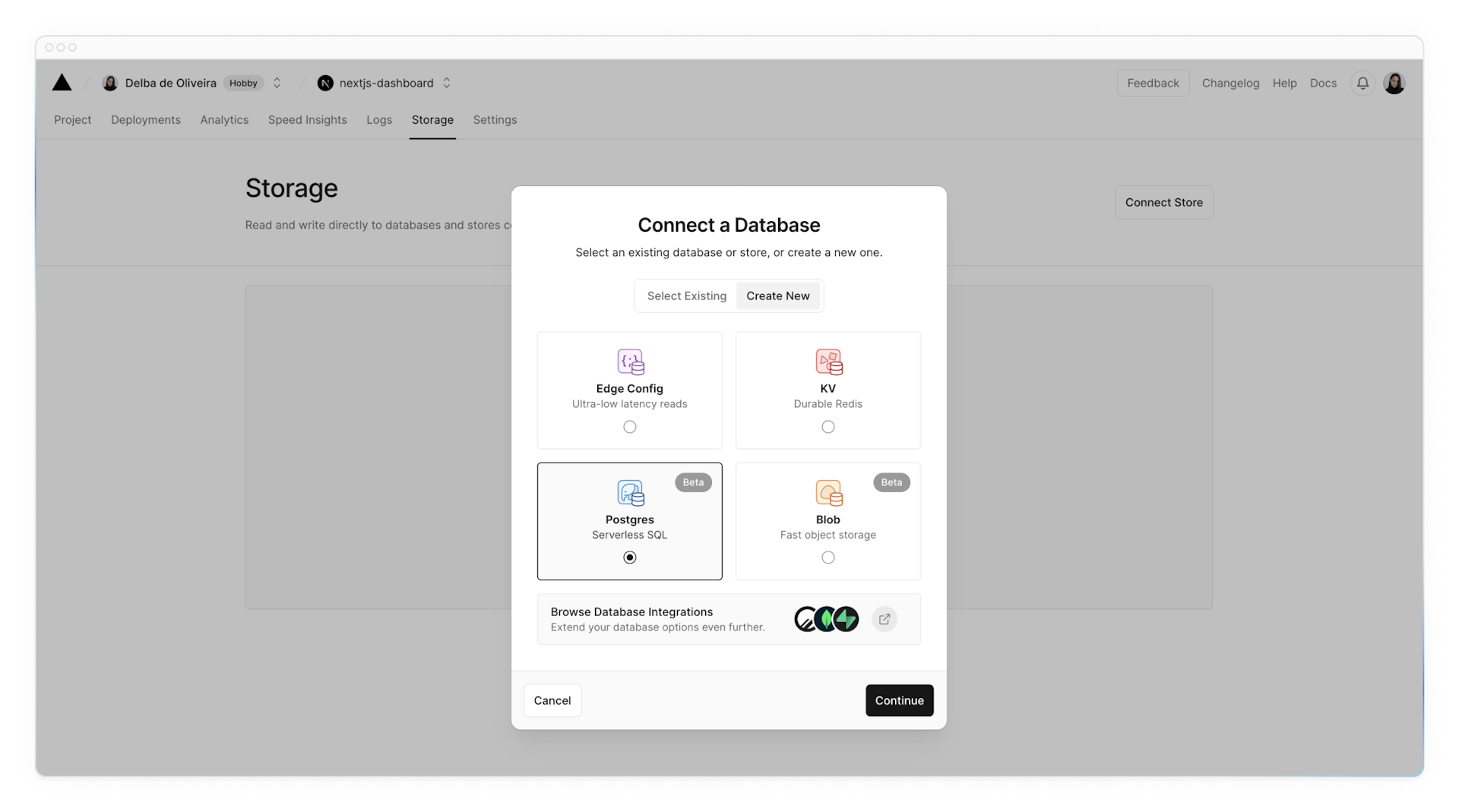
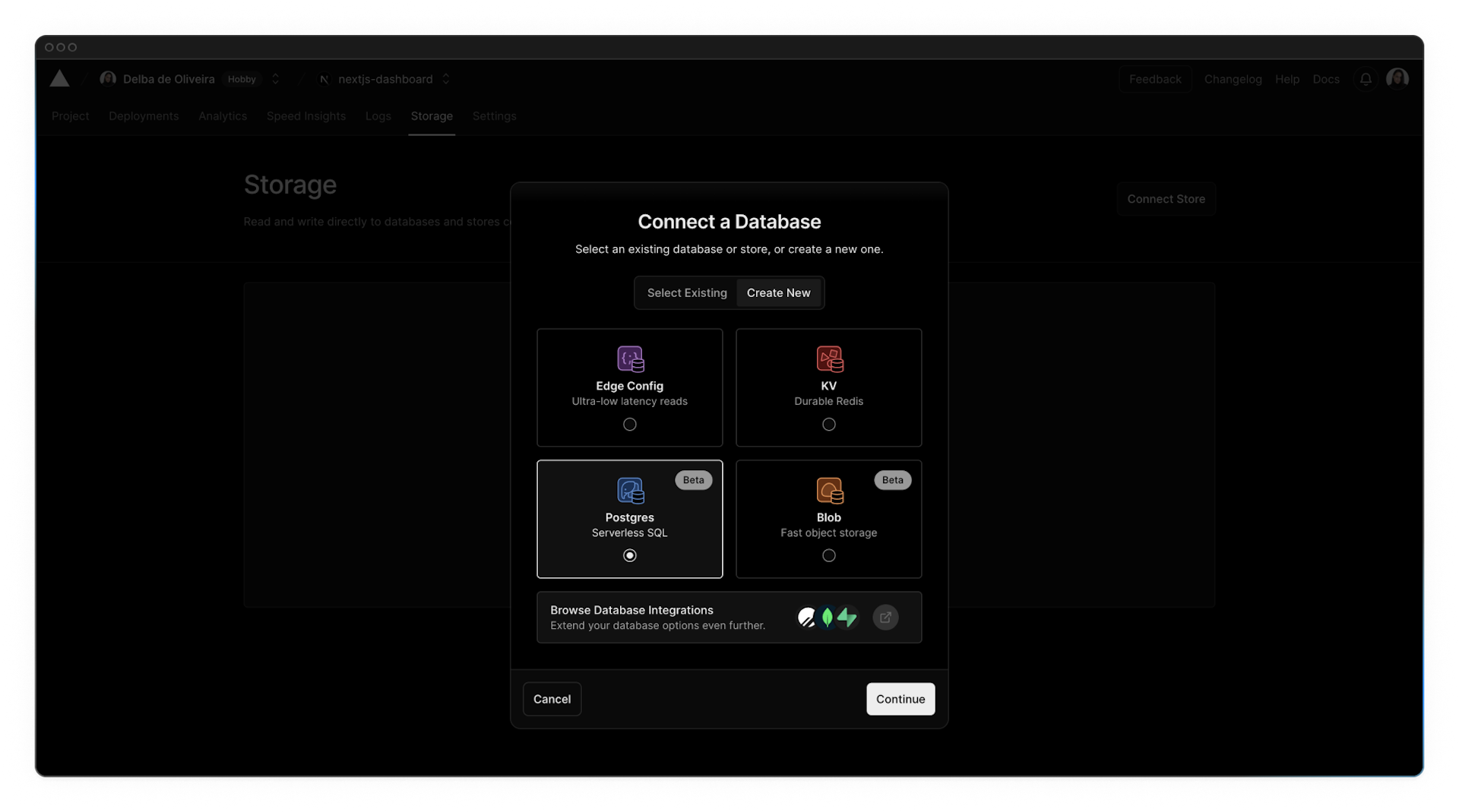
Accept the terms, assign a name to your database, and ensure your database region is set to Washington D.C (iad1) - this is also the default region for all new Vercel projects. By placing your database in the same region or close to your application code, you can reduce latency for data requests.
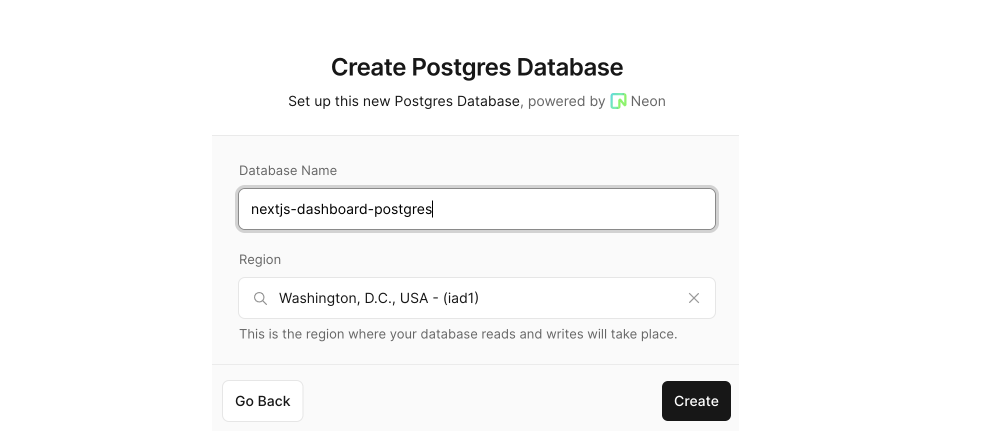
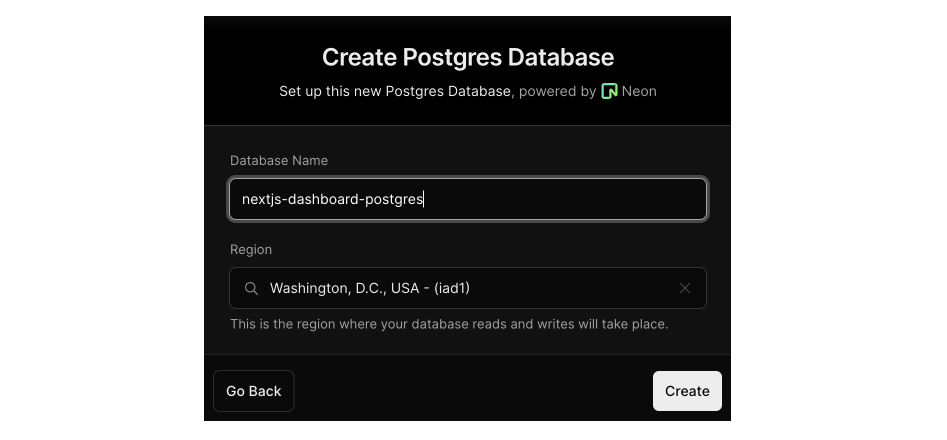
Good to know: You cannot change the database region once it has been initalized. If you wish to use a different region, you should set it before creating a database.
Once connected, navigate to the .env.local tab, click Show secret and Copy Snippet. Make sure you reveal the secrets before copying them.
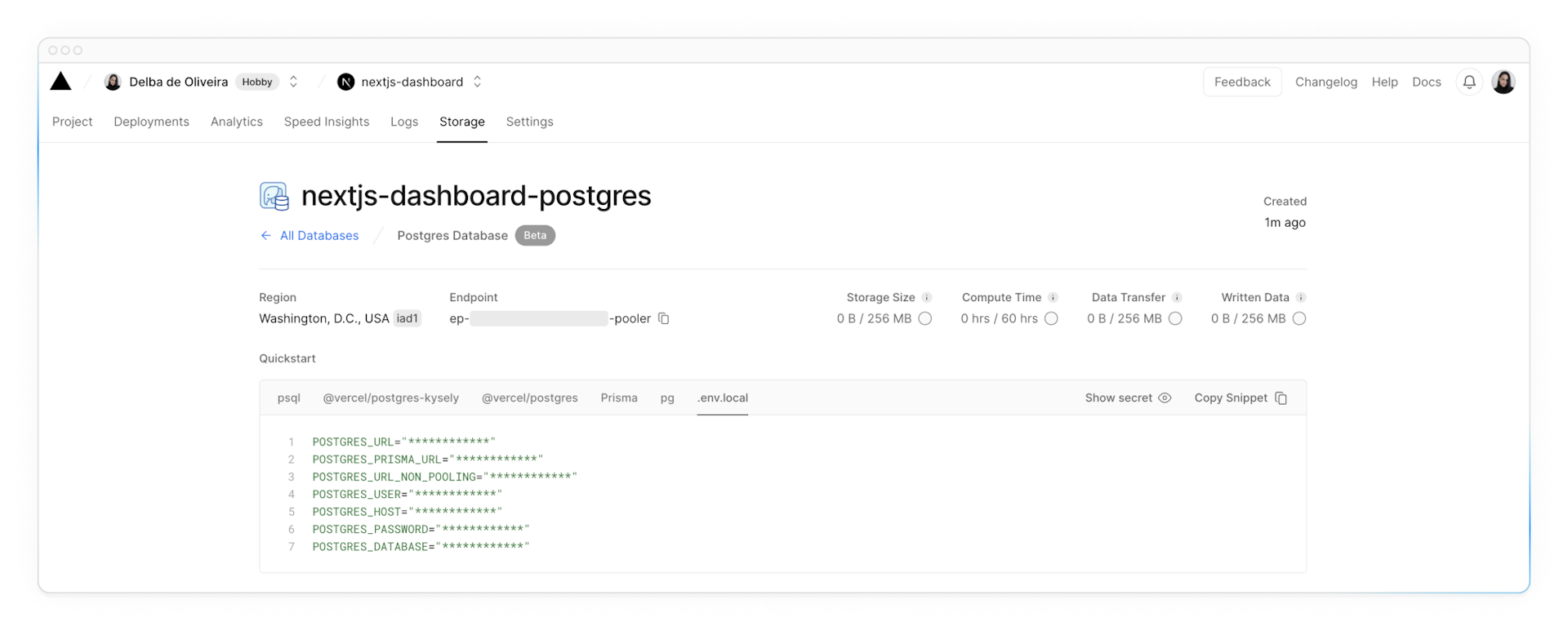

Navigate to your code editor and rename the .env.example file to .env. Paste in the copied contents from Vercel.
Important: Go to your .gitignore file and make sure .env is in the ignored files to prevent your database secrets from being exposed when you push to GitHub.
Finally, run npm i @vercel/postgres in your terminal to install the Vercel Postgres SDK.
Seed your database
Now that your database has been created, let's seed it with some initial data. This will allow you to have some data to work with as you build the dashboard.
In the /scripts folder of your project, there's a file called seed.js. This script contains the instructions for creating and seeding the invoices, customers, user, revenue tables.
Don't worry if you don't understand everything the code is doing, but to give you an overview, the script uses SQL to create the tables, and the data from placeholder-data.js file to populate them after they've been created.
Next, in your package.json file, add the following line to your scripts:
"scripts": {
"build": "next build",
"dev": "next dev",
"start": "next start",
"seed": "node -r dotenv/config ./scripts/seed.js"
},This is the command that will execute seed.js.
Now, run npm run seed. You should see some console.log messages in your terminal to let you know the script is running.
Troubleshooting:
- Make sure to reveal your database secrets before copying it into your
.envfile.- The script uses
bcryptto hash the user's password, ifbcryptisn't compatible with your environment, you can update the script to usebcryptjsinstead.- If you run into any issues while seeding your database and want to run the script again, you can drop any existing tables by running
DROP TABLE tablenamein your database query interface. See the executing queries section below for more details. But be careful, this command will delete the tables and all their data. It's ok to do this with your example app since you're working with placeholder data, but you shouldn't run this command in a production app.- If you continue to experience issues while seeding your Vercel Postgres database, please open a discussion on GitHub.
Exploring your database
Let's see what your database looks like. Go back to Vercel, and click Data on the sidenav.
In this section, you'll find the four new tables: users, customers, invoices, and revenue.

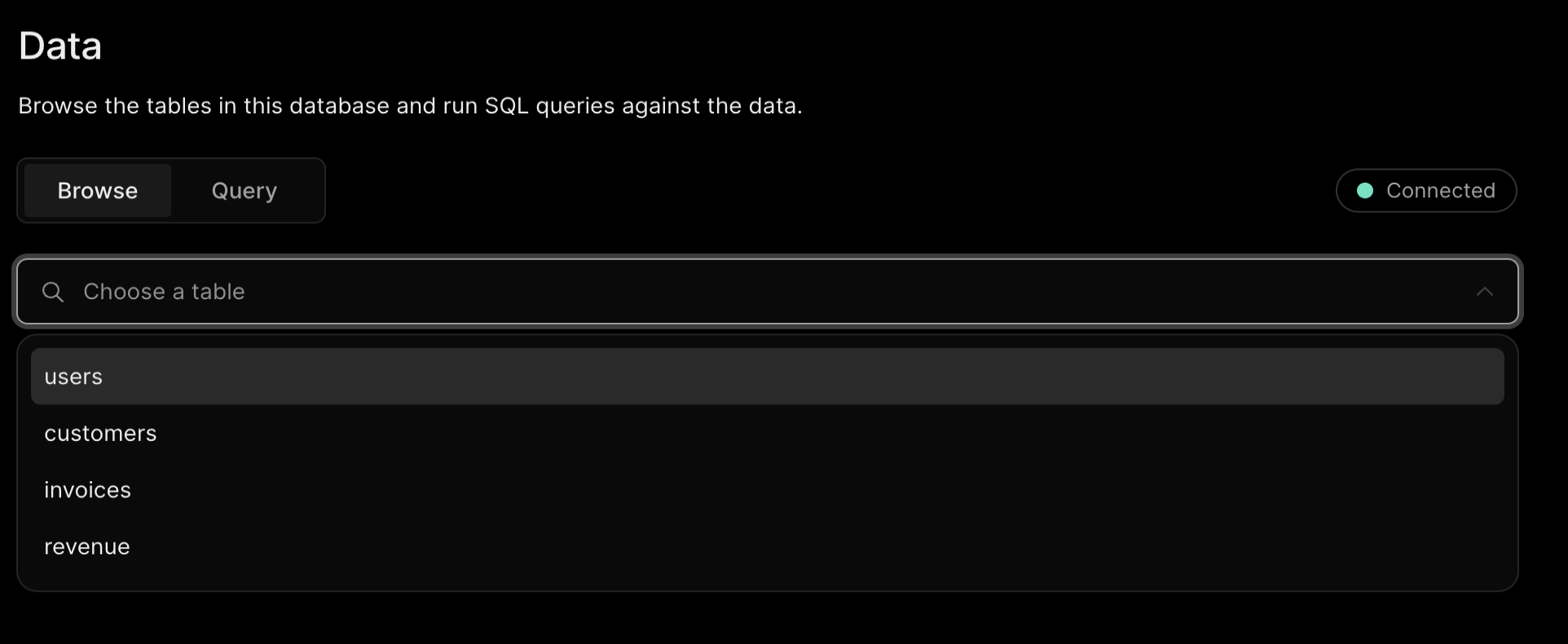
By selecting each table, you can view its records and ensure the entries align with the data from placeholder-data.js file.
Executing queries
You can switch to the "query" tab to interact with your database. This section supports standard SQL commands. For instance, inputting DROP TABLE customers will delete "customers" table along with all its data - so be careful!
Let's run your first database query. Paste and run the following SQL code into the Vercel interface:
SELECT invoices.amount, customers.name
FROM invoices
JOIN customers ON invoices.customer_id = customers.id
WHERE invoices.amount = 666;You've Completed Chapter 6
With your database now set up and integrated, you can continue building your application.
Was this helpful?